Editor's Note:
Winter in Beijing can be brutal, especially in its historic hutongs. But while most of the residences in the city’s quickly disappearing alleyways lack insulation or sufficient heating, they offer a different kind of warmth; namely their rich traditional culture and friendly elderly residents, many who have spent a lifetime in the heart of the capital. Photos:CFP
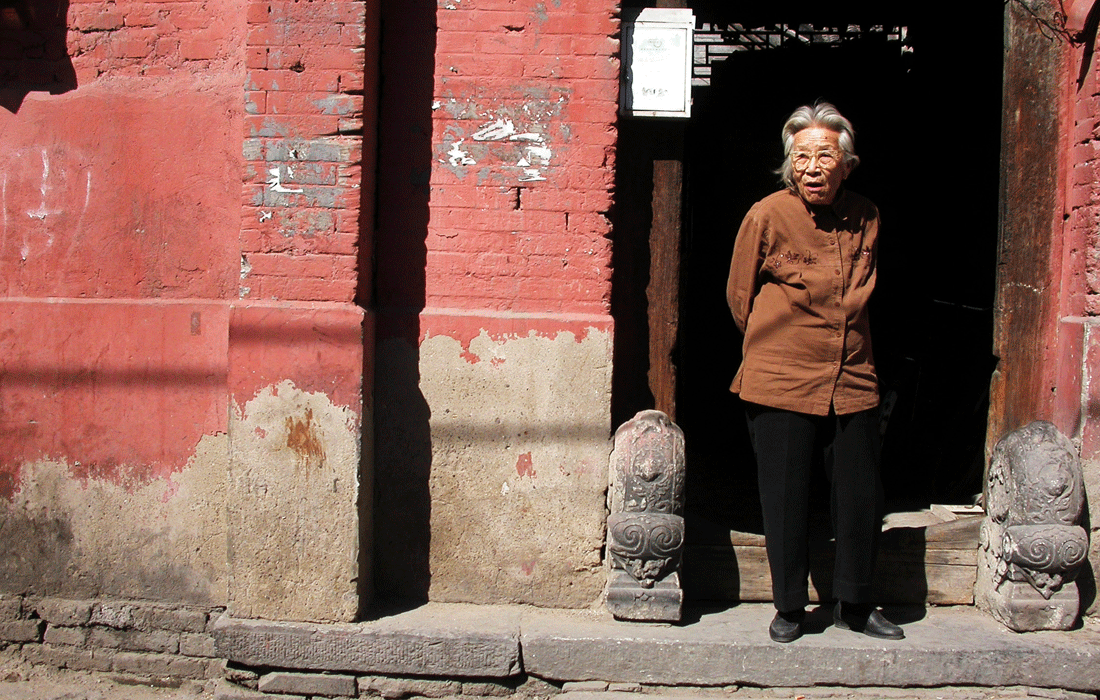 An old woman stands at the gate of a traditional hutong courtyard. Once filled with hutongs, in recent decades Beijing has seen its distinctive architecture disappear under the wrecking ball to make way for apartment blocks. Beijingers whose families have lived in the hutongs for generations are sometimes reluctant to leave.
An old woman stands at the gate of a traditional hutong courtyard. Once filled with hutongs, in recent decades Beijing has seen its distinctive architecture disappear under the wrecking ball to make way for apartment blocks. Beijingers whose families have lived in the hutongs for generations are sometimes reluctant to leave. 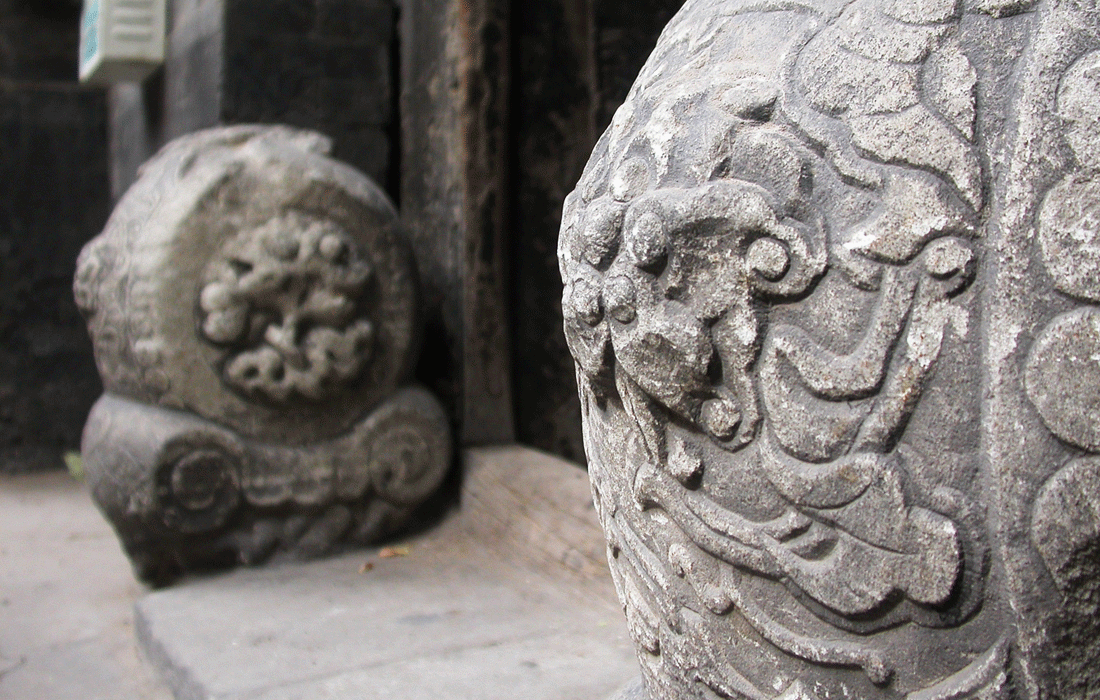 Pictured is a pair of gate piers. These carved stones are both decorative and help support the wooden door frames used in traditional courtyard homes. They are not only an important architectural element, but their designs reveal the status or occupation of their former owners.
Pictured is a pair of gate piers. These carved stones are both decorative and help support the wooden door frames used in traditional courtyard homes. They are not only an important architectural element, but their designs reveal the status or occupation of their former owners. 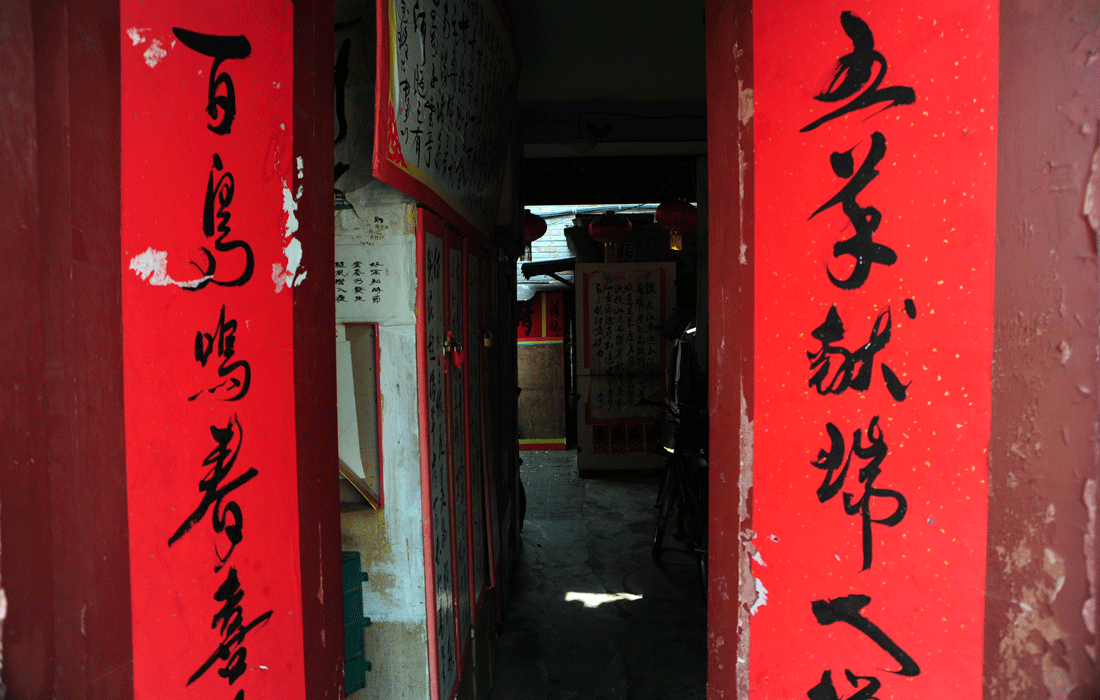 A Chinese New Year tradition, posted couplets bearing messages of fortune and good luck around doors remind their residents of good things when leaving or returning home.
A Chinese New Year tradition, posted couplets bearing messages of fortune and good luck around doors remind their residents of good things when leaving or returning home. 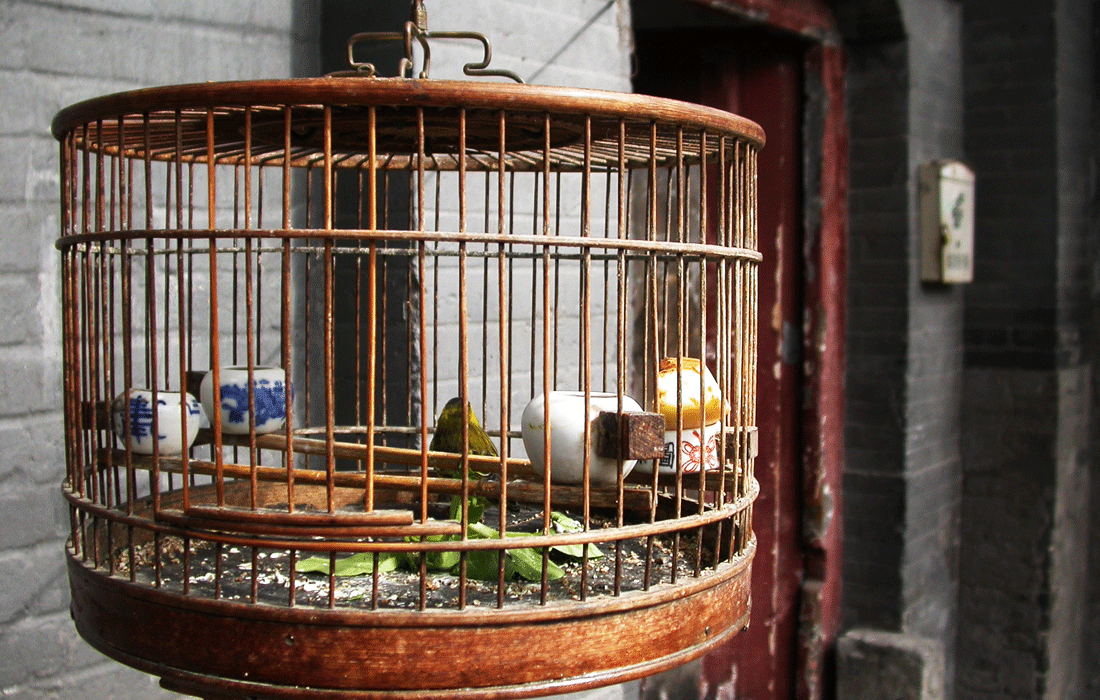 “Liu niao” means taking a walk with a pet bird, whether it be in a cage or tied to a string. For Beijing natives, Liu niao can be an after-dinner activity, where family and friends walk through the hutongs or gather at local parks.
“Liu niao” means taking a walk with a pet bird, whether it be in a cage or tied to a string. For Beijing natives, Liu niao can be an after-dinner activity, where family and friends walk through the hutongs or gather at local parks. 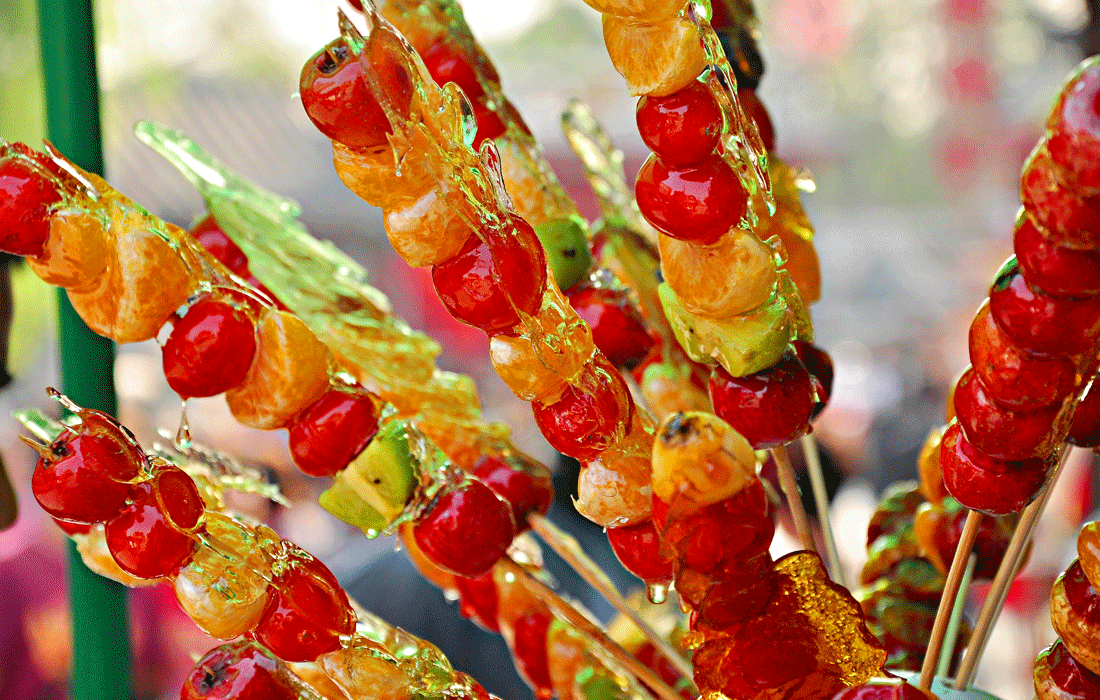 Winter in Beijing wouldn’t be complete without tanghulu, or skewered candied fruit. Originally from northern China, this winter treat is commonly sold on the streets of most northern cities, such as Beijing, Tianjin.
Winter in Beijing wouldn’t be complete without tanghulu, or skewered candied fruit. Originally from northern China, this winter treat is commonly sold on the streets of most northern cities, such as Beijing, Tianjin. 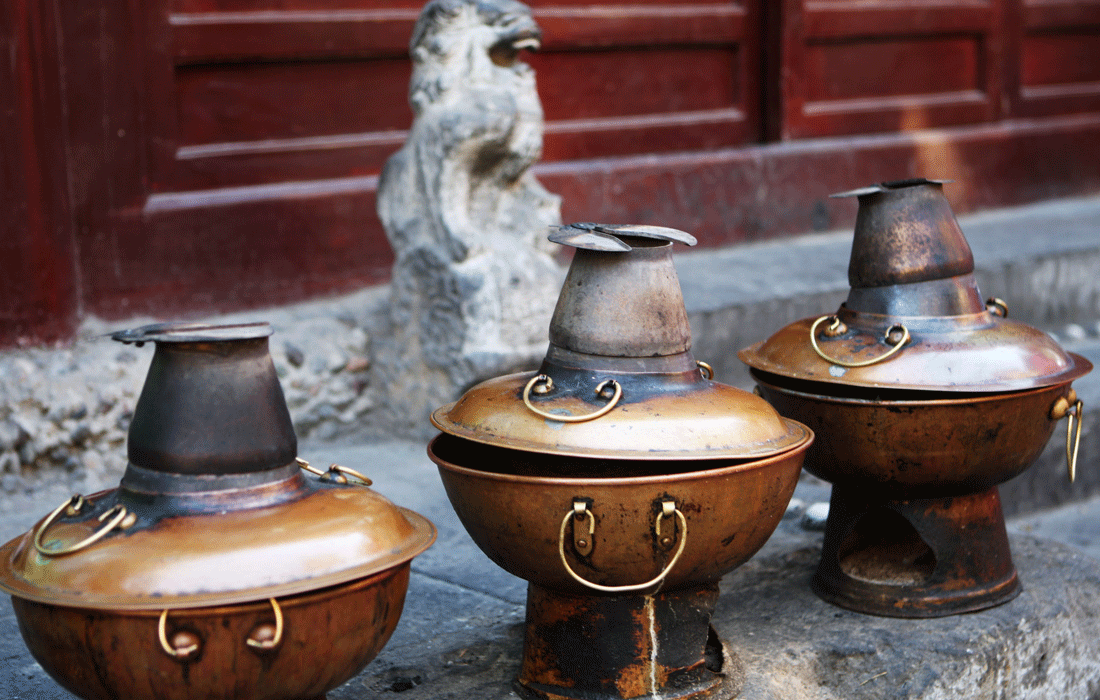 Nothing fights off the winter chill like a dinner of Beijing hotpot. A hearty symbol of old Beijing, hutong dwellers can be found surrounding a traditional copper hotpot of boiled meats and vegetables in broth to make Beijing’s dry and long winters a little more bearable.
Nothing fights off the winter chill like a dinner of Beijing hotpot. A hearty symbol of old Beijing, hutong dwellers can be found surrounding a traditional copper hotpot of boiled meats and vegetables in broth to make Beijing’s dry and long winters a little more bearable. 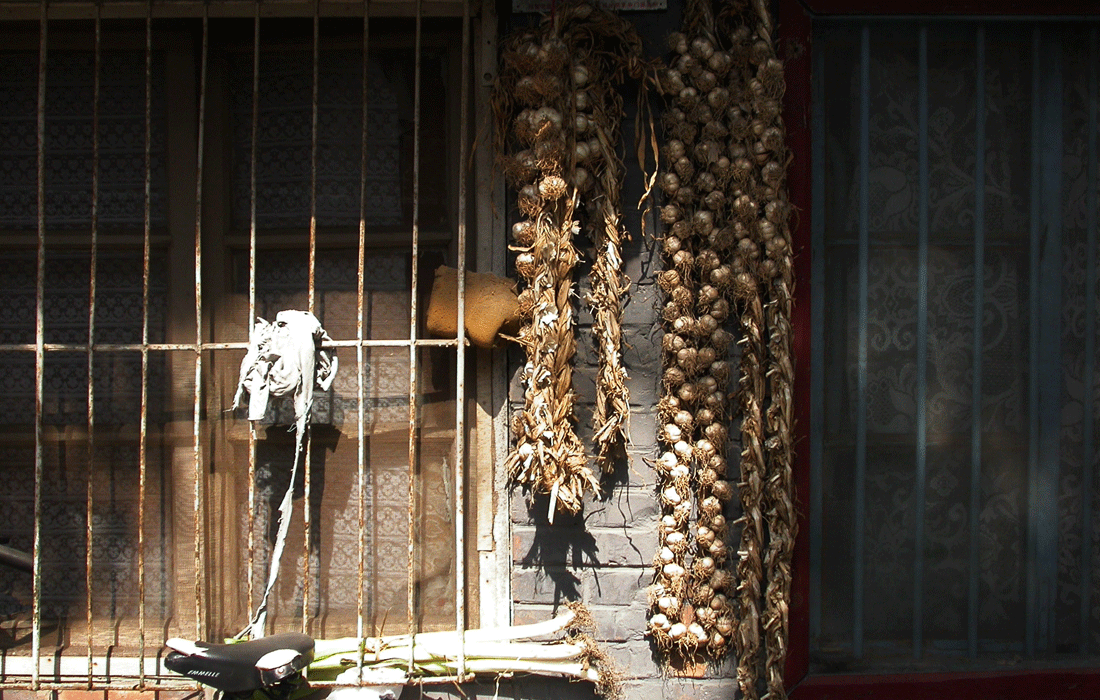 Several braids of garlic hang on a wall outside the window of a hutong residence. Also used for cooking, the thick braids are traditionally hung outside doors in the belief they help ward off evil spirits.
Several braids of garlic hang on a wall outside the window of a hutong residence. Also used for cooking, the thick braids are traditionally hung outside doors in the belief they help ward off evil spirits. 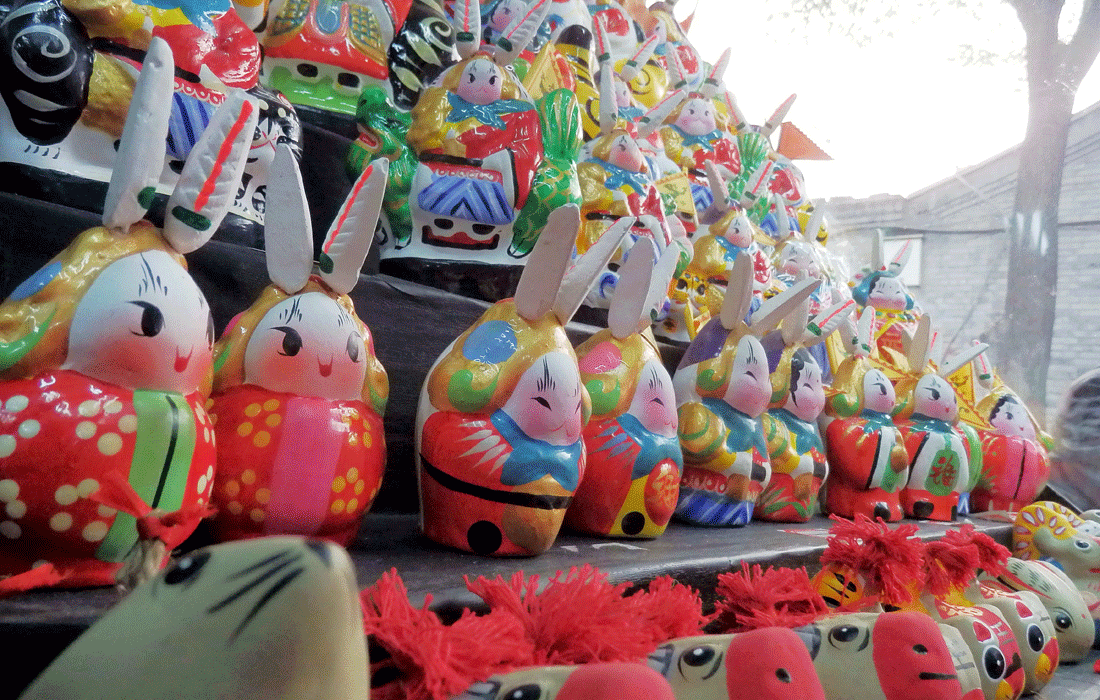 Pictured are colorful ceramic figurines of a famous hutong resident. “Tu’er Ye,” also known as the “Lord Rabbit”, is a Beijing folk deity with roots in moon worship and is a symbol of good luck.
Pictured are colorful ceramic figurines of a famous hutong resident. “Tu’er Ye,” also known as the “Lord Rabbit”, is a Beijing folk deity with roots in moon worship and is a symbol of good luck. 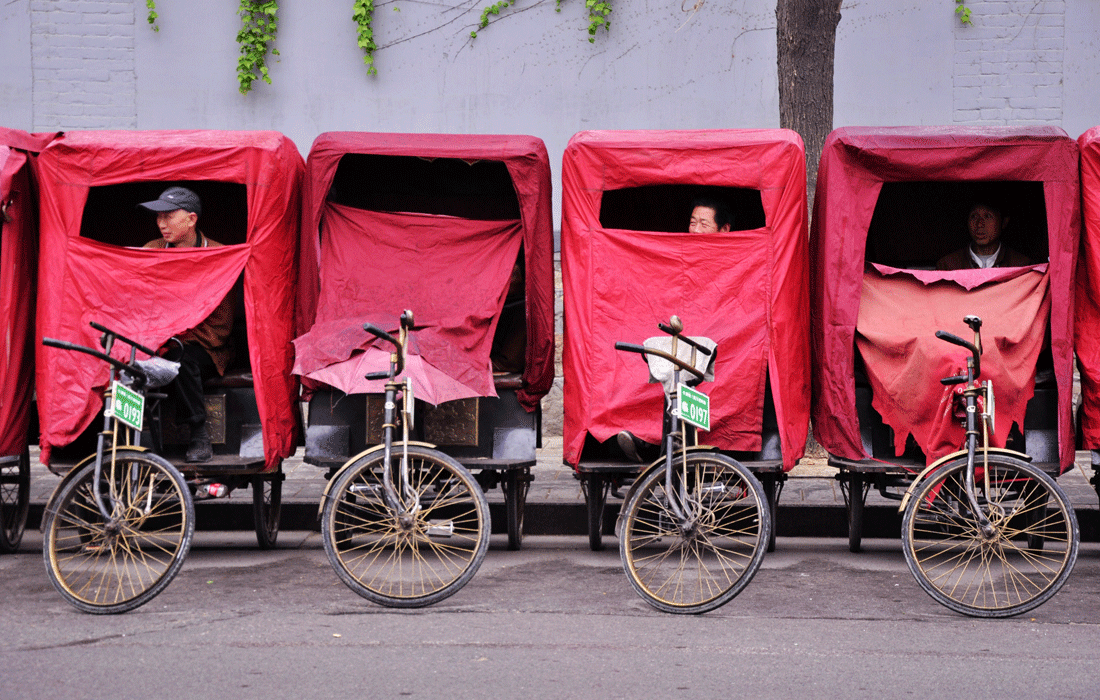 Rickshaw drivers offer tours of the rapidly disappearing hutongs to tourists from all over the world. Realizing their cultural value, the Beijing government has designated some hutong neighborhoods as protected historic areas.
Rickshaw drivers offer tours of the rapidly disappearing hutongs to tourists from all over the world. Realizing their cultural value, the Beijing government has designated some hutong neighborhoods as protected historic areas. 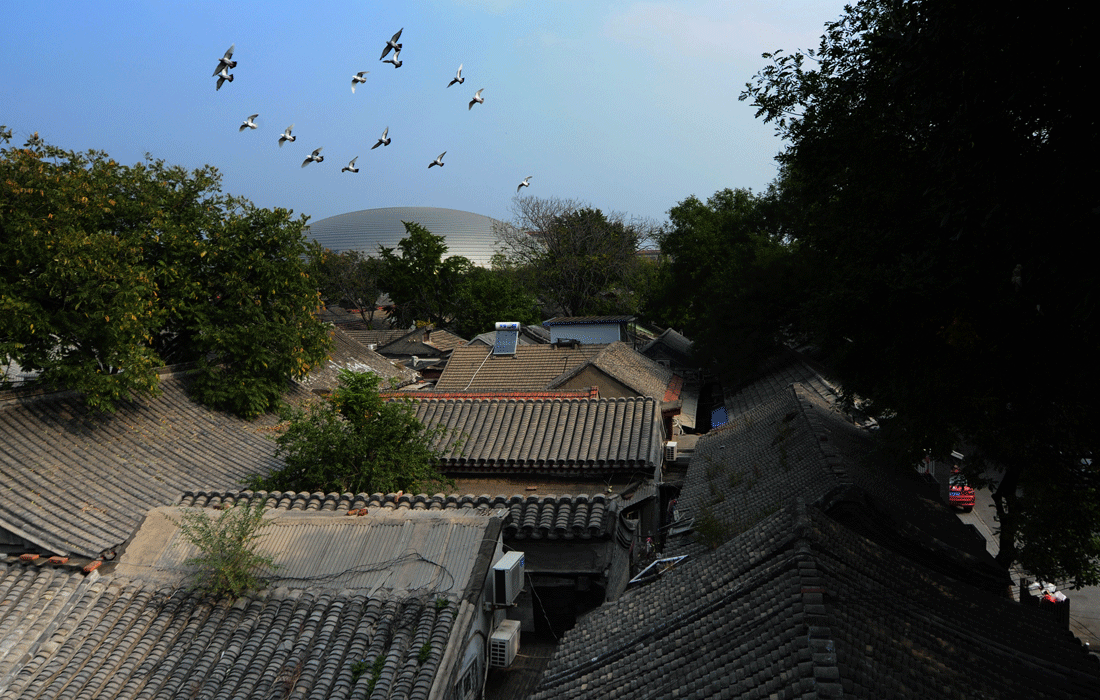 A flock of pigeons flies over traditional rooftops in a hutong. The National Center for the Performing Arts, or “The Egg,” is visible in the background.
A flock of pigeons flies over traditional rooftops in a hutong. The National Center for the Performing Arts, or “The Egg,” is visible in the background. 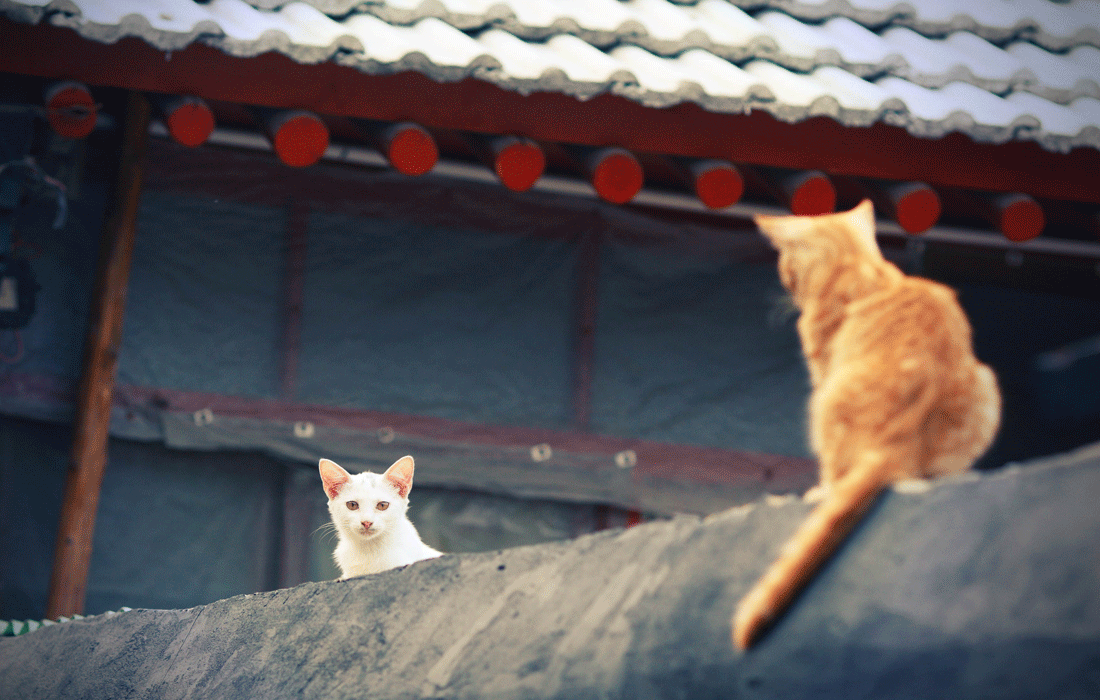 Two cats sit on a tile roof in the hutongs.
Two cats sit on a tile roof in the hutongs. 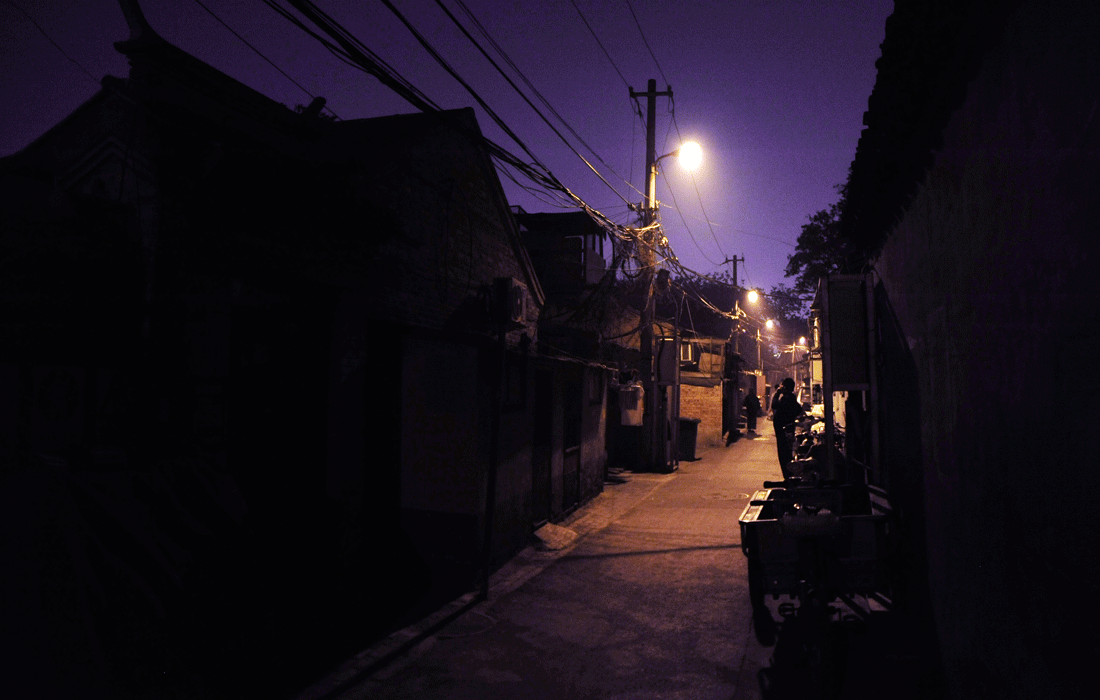 A scene from a still hutong evening
A scene from a still hutong evening












